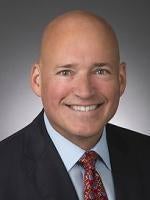The first day of the HIMSS19 conference featured a day long blockchain symposium focusing on “How Blockchain Technology Brings Value to Healthcare.” The room was packed.
The morning presentations included an overview of blockchain and distributed ledger technology, including the strengths and limitations of this emerging technology as applied to healthcare. David Houlding, Principal Healthcare Lead for Microsoft Corporation sorted through the reality and the hype. On the strengths, he highlighted the data integrity, transparency, decentralization, resilience, and anti-fraud aspects of the technology. In the short term, he indicated that applications where blockchain can reduce costs (e.g., provider directories, provider credentialing, and drug supply chains) will be first adopted, followed by the more complex applications that improve patient outcomes, engage patients and enhance their experiences, and finally those that enhance healthcare professional experiences. He stressed that one of the most difficult challenges is building the consortium trust among the relevant network of healthcare organizations. He also noted that blockchain will not replace, but rather co-exist with enterprise systems, where it makes business sense.
This was followed by a panel featuring Heather Flannery, Global Lead Consensys Health; Brian Behlendorf Executive Director, Hyperledger; and Kevin Clauson, Associate Professor, Pharmacy Practice, Lipscomb University College of Pharmacy. They provided an interesting discussion on considerations beyond the technology, what has worked in current blockchain projects in healthcare and where blockchain is today and what is realistic in the near future. They stressed that it is critical to review and evaluate each use case and assess whether a blockchain solution is really needed.
The next presentation featured Steve Posnack, Executive Director, ONC Office of Technology. He outlined the work of the Department of Health and Human Services (HHS) and the role they play in technology decisions, how HHS looks at new technologies, and how technologies like blockchain become part of the discussion. He discussed HHS’s current blockchain strategy and the expected near and medium term impacts of those efforts. He discussed as one example, how last year HHS launched Accelerate, which uses distributed-ledger technology, machine learning and artificial intelligence to deliver real-time information on pricing and terms and conditions from across HHS. He discussed how ONC has conducted various blockchain events, code-a-thons and white paper challenges. He concluded with some observations about where he saw blockchain applications in healthcare including: Identity Management (Identity, authentication, authorization,) and credential verification; Access Control and Consent; Auditing and Auditing; and New and Improved Workflows.
The afternoon sessions were focused more on practical applications and companies actually leveraging blockchain. The first afternoon panel included James Zadoorian, Managing Principal, Arxchange; Rishi Madhok, CEO, Bitmed; and Robert Miller, Co-founder and CEO, Honeycomb Health. The ARxChange Patient Revenue Optimization (ARxPRO) is an integrated suite of patient financial care and revenue optimization applications that allow healthcare providers, revenue cycle firms, as well as patient finance and billing entities to institute effective patient financial care and revenue systems. BitMED focuses on incentivized healthcare on the blockchain. Honeycomb Health has a blockchain-based platform that enables patients suffering from rare diseases by providing them the ability to securely store, access, and share their health information all in one place.
This was followed by a panel including: Alexis Normand, Head of Blockchain for Health Consortium, Embleema; Anthony Begando CEO, Professional Credentials Exchange LLC; and Pradeep Goel, CEO Solve.Care Foundation. Embleema’s distributed ledgers allow healthcare data to be managed securely, not by a central authority, but by a group of healthcare stakeholders. Their decentralized networks include patients, advocacy groups, life sciences companies, payers and care centers. The Professional Credentials Exchange, a collaborative effort between Hashed Health and other industry leaders to create solutions leveraging blockchain, advanced database, and artificial intelligence to address the cost, complexity, and delays historically surrounding practitioner credentialing, through a network and transaction infrastructure that connects sources and consumers of credentials information across the healthcare industry. Solve.Care is a decentralized and distributed platform for the administration of healthcare and benefits programs.
The closing panel featured Heather Flannery; John Bass CEO, Hashed Health; and Russell Hanson Chief Scientific Officer at Endjinn, A Consensys Spoke. The panel provided a wrap up overview of the day and included a healthy dose of pragmatism by John Bass, who made clear his views on the current limitations of blockchain and how Hashed Health is focusing on solutions that are practical now. He discussed one of their projects, Bramble, which is a national marketplace for the buying and selling of healthcare services focused on competition and choice.
Overall, there is great enthusiasm for blockchain and healthcare. The key takeaway was that there are some practical limitations, and before the industry will see the really sophisticated applications that can fully leverage blockchain, AI, smart contracts and IoT, simple practical applications are needed to demonstrate value and viability.
For an overview of blockchain and healthcare, please see our paper How Blockchain Can Impact Healthcare.




 />i
/>i
